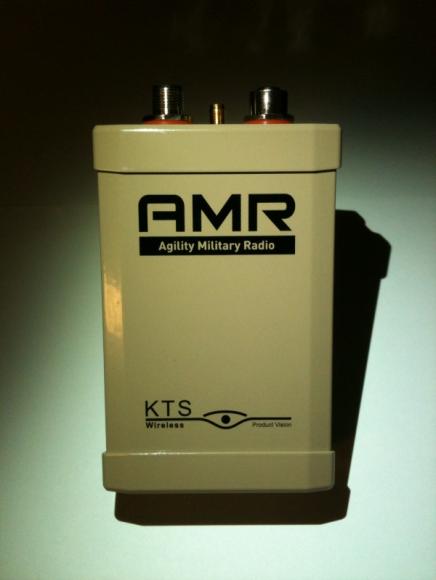KTS Wireless-RSDI White Spaces Radios
Click here to view or download: KTS Wireless-RSDI White Spaces Radios
The utility and flexibility provided by a white spaces radio network provides solutions in the domains of military training, homeland security and disaster preparedness and response. Further, white spaces radio network systems allow tremendous advantages in interoperability between regular US military unit, US National Guard units, foreign military units and emergency responders, reducing resource conflicts and interference in training environments and disaster locations.
1 Introduction
There is possibly no bigger obstacle to small area radio networks than acquiring a frequency that meets the requirements of the network’s users. This paper examines the potential of using recently approved unlicensed access to former analog television spectrum in the areas of military training, disaster response and interoperability between friendly foreign and US military.
2 White Spaces
The Federal Communications Commission (FCC) has recently approved unlicensed access to nearly 300 MHz of VHF and UHF spectrum in the US formerly reserved for broadcast television. While unlicensed, access to this spectrum does require centralized database management.
Unused TV channels between 2 and 52 (except 3- 4 and 36-38) are available for use in areas where they are not used for TV broadcasts or other licensed services. A single ‘guardband’ channel (6 MHz) adjacent to each active TV channel must remain unused. Unused, non-adjacent channels can be used for wireless networking such as emergency Internet access, video surveillance, military training networks and first-response networks.
The number of available channels depends on the presence of operational TV channels in the area. Availability in and around large cities may be limited. However, availability in rural areas will be much higher.
3 Uses in Military Training
One of the rapidly growing uses of this newly available spectrum is in military training. In this application, exercise participants are fitted with radios that can be dynamically configured to use available white space spectrum. Additional radios can be configured as hubs or base stations, thus creating an IP based data network allowing for exercise information to be collected and exchanged with other local intranets or the Internet. The network can also be connected to exercise control for forwarding critical information to the Observer/Controllers. Finally, the network can be encrypted (to 128 bit with hardware acceleration, higher without acceleration).
Existing technology can cover nearly 3 square miles of area and is small and compact enough to operate for over 24 hours with a 2 lb battery. Assuming total two-way traffic is about 2.425 Mb/s, this allows for 1.724 Mb/s in the Hub to Remote direction (downlink) and 0.701 Mb/s in the Remote to Hub (upstream) direction. Since each white space channel can support 3.125 Mb/s (two-way), a single 6 MHz channels will provide sufficient capacity to support many military training applications. This channel can be either in the VHF or UHF band.

